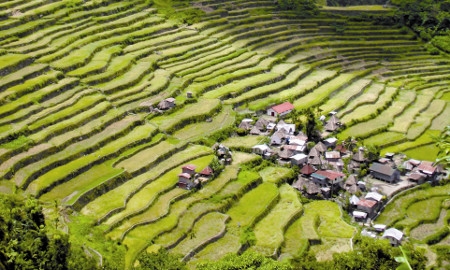If you are looking for a whole different experience on your next vacation, head east of Vietnam and try the beautiful island nation of the Philippines. Lapped by the Luzon Strait and the South China, Celebes, Sulu and Philippine Seas, this tropical archipelago of 7,107 islands covers a land area slightly larger than that of Arizona and is packed with delights to discover.
Favorite haunts for visitors range from the truly spectacular beaches of Boracay and impressive UNESCO World Heritage Site rice terraces of Banaue, to world-class diving in Palawan and one of the world’s best preserved historic sites from World War II on Corregidor, in addition to others in Leyte and around the country.
Traditionally popular with visitors from North America and Europe – the U.S. is the Philippines’ second-largest tourist market by nationality, just after South Korea and ahead of Japan – the Philippines is expecting a surge in near-haul arrivals from around the region, as neighboring countries’ economies expand and their middle classes’ travel budgets follow suit.
Last year, the Philippines welcomed almost 4.3 million visitors – breaking the 4 million mark for the first time in its history. World Travel and Tourism Council figures show that the $4.484 billion that travel and tourism directly contributed to the country’s GDP in 2011 rose almost 14% in 2012 to $5.108 billion.
In the first two months of 2013, tourist arrivals in the Philippines hit a record high of 854,187. According to Tourism Secretary Ramon Jimenez.
Jr.: “Our tourism numbers are now reaching unprecedented heights. We have a target of 5.5 million this year and 10 million by 2016. Our efforts are in full swing to raise greater demand, facilitate entry and
access to the different destinations, and for our suppliers and host communities to come together and create fun-filled experiences.”
| To satisfy growing demand and tourist numbers, an additional 37,000 new hotel rooms are needed by the year 2016 in key destinations around the archipelago |
In addition to attracting more foreign arrivals, the government is also targeting 56.1 million domestic tourists by 2016 and has stated that an estimated 37,000 more hotel rooms will be needed in tourism hotspots by 2016.
Potential investors in the Philippine tourism industry can also take confidence from the ongoing improvements in the overall business climate in the Philippines. Among these include better protection of property rights, greater openness toward foreign investment, and fewer visa requirements for foreign visitors.
Tourism also has the full support of President Benigno Aquino III, who hopes to build up a vibrant tourism sector, identifying it as a top priority industry. The Department of Tourism points out that almost half of the government’s infrastructure projects have been aligned to support access to the country’s cluster tourist destinations. Being an archipelago, the sector will need the support of a reliable transportation network in particular.
An example of government initiatives complementing each other can be seen in a convergence task force in place between the Department of Tourism and the Department of Public Works and Highways for the construction of tourism roads, bridges and other such projects. Closer coordination among all sectors to streamline the tourist experience at all major ports is additional evidence of a unified determination to build up and support the expansion of Philippine tourism.
Such efforts to develop the Philippines’ tourism potential have been recognized by the World Economic Forum (WEF) tagging the country as the “most improved” in the Asia-Pacific region earlier this year. In its Travel & Tourism Competitiveness Report 2013 analyzing 140 economies, the WEF ranked the country 16th in the region and 82nd globally – the latter result representing a 12-place leap. The report found the prioritization of the travel and tourism industry was “very strong”, with the country’s 15th place ranking coming as government spending on the sector as a percentage of GDP now being “first in the world, and tourism marketing and branding campaigns are seen to be increasingly effective.”
The country’s popular ‘
It’s More Fun in the Philippines’ tourism campaign currently in full sway taps into the power of promotion via social media channels and aims to raise the country’s international profile to show the world that the Philippines is not just a place to see, but a place to experience.

0 COMMENTS